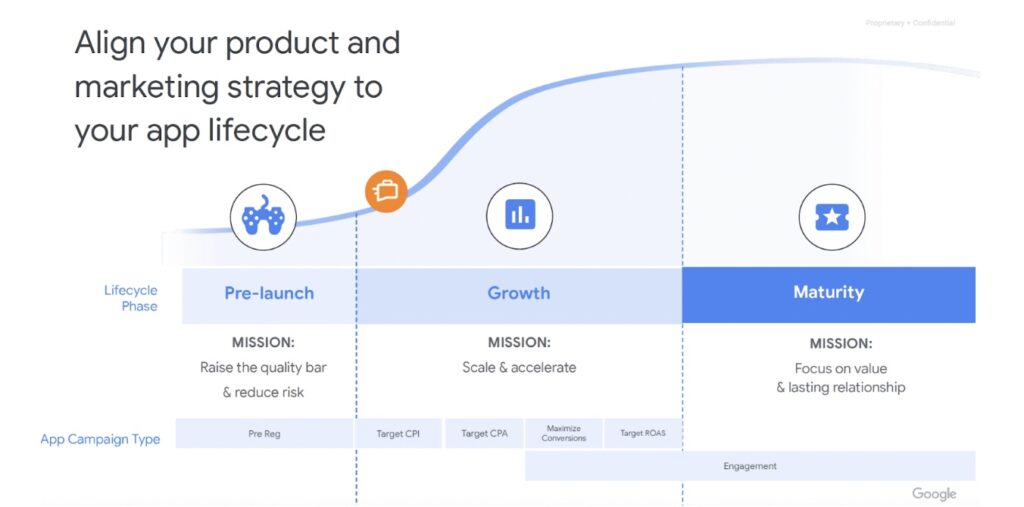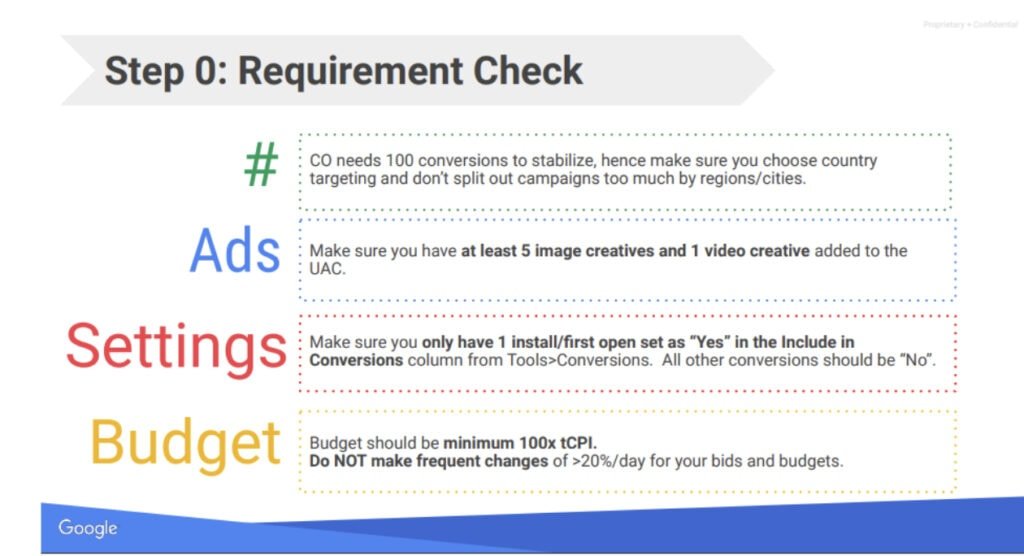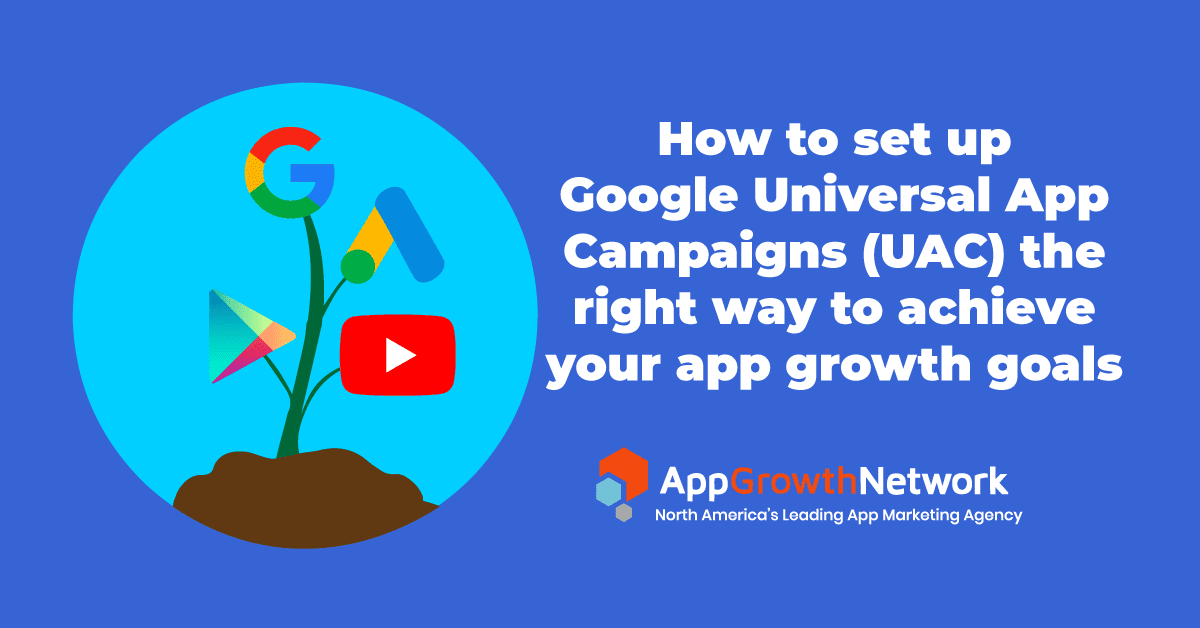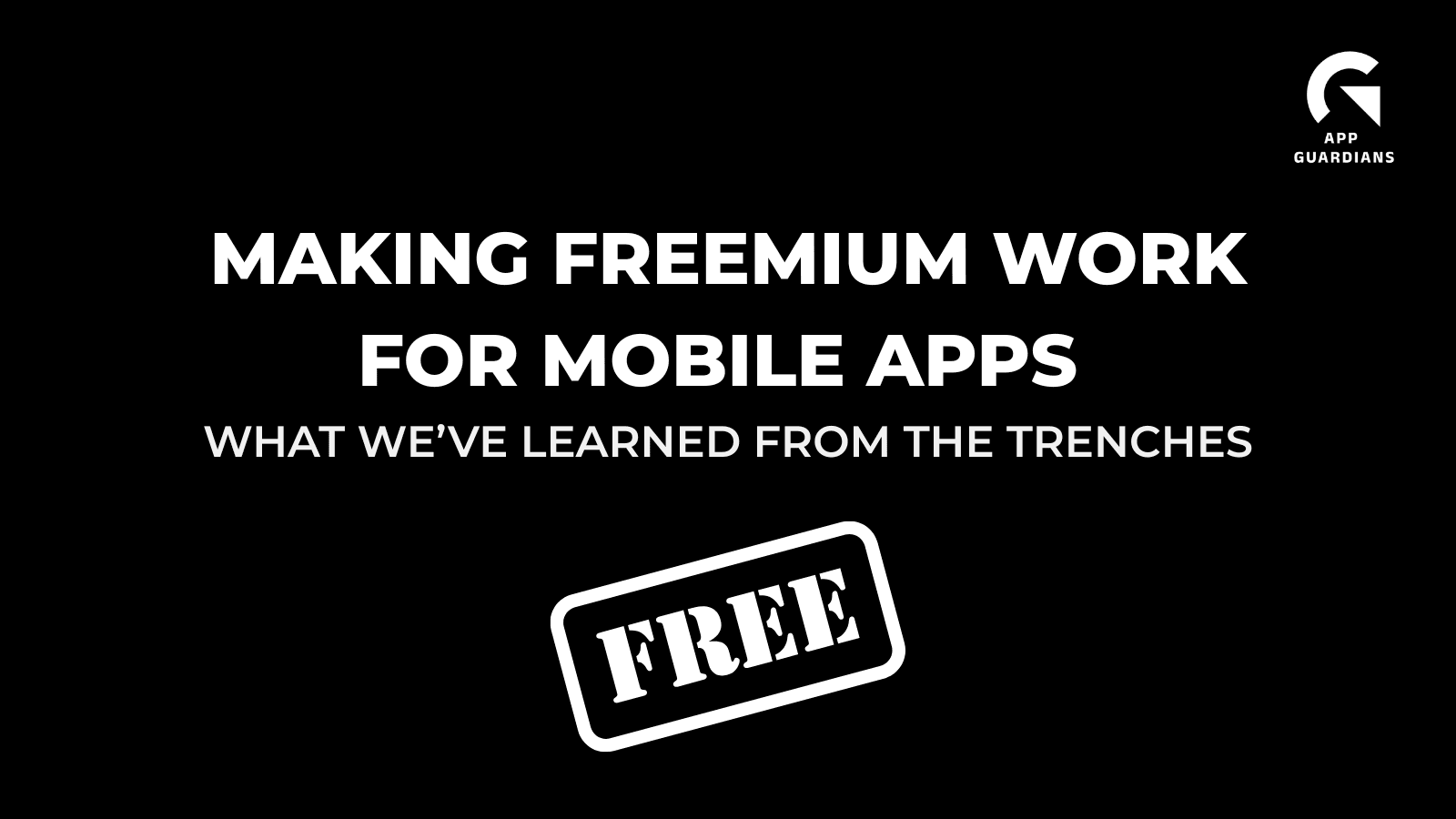How to set up Google Universal App Campaigns (UAC) the right way to achieve your app growth goals
Ask any app marketer what their preferred paid user acquisition channels are to achieve app growth business goals, and Google Universal App Campaigns (UAC) are almost always on the list.
That’s because UAC provide attainable advertising access to the behemoth that is Google and all its network of properties—including Google Search, Google Play, YouTube and Google Display Network—with the ability to drive traffic to both the Google Play Store and Apple App Store.
But where most unseasoned app marketers fall short in getting the most bang for their buck when it comes to Google UAC investment is failing to optimize for the different types of ad campaigns offered.
Let’s dig deeper…
What to avoid when incorporating Google UAC into your paid user acquisition efforts
Know at which stage of the app lifecycle your product is. A common mistake is rushing through the process and/or skipping stages to get to in-app purchases.
Why is this important?
Because the campaigns need time to start learning phrases and time for gathering data to display ads to the most relevant audiences. This is especially true when you start running campaigns for new markets, are testing a new feature, or haven’t run any campaigns for a while. If you rush into getting purchases and don’t give the campaigns ample time to learn, the algorithm won’t know who your audiences are and effectively deliver ads to the right users. This will only waste your money and result in a poor return on ad spend.
There are 3 life stages of an app: Pre-launch, Growth, and Maturity. Here we’ll focus on the Growth stage where the online marketing strategies begin and will yield the best results.

Source: Google
The 3 campaign set-up steps to achieve your Growth Stage goals
1. Set up an Install Campaign
Getting installs is the most fundamental step for your app. It’s so basic to all marketers and businesses out there that, sometimes, we neglect its importance and don’t give it the proper attention it needs to do it right.
So, here are the best practises for how to build an install campaign. The requirement check includes:
- Locations: Don’t scatter campaigns across too many regions or cities and opt for country targeting; this makes it easier to reach the 100 conversions needed to stabilize the algorithm
- Ads: Add at least 5 images and 1 video to your UAC creative
- Settings: Check the conversions setting to make sure you only have the “install/first open” set as “yes”
- Budget: Set your budget minimum to 100x the target CPI
Make sure to apply these tips to get the best out of your campaigns. After you’ve done so, let the campaigns run for 7-10 days until it gets at least a total of 100 in app events and 10-20 in-app events per day.
Once you’ve achieved this, you can move to step 2 down the funnel: Target actions.

Source: Google
2. Set up a Target Campaign
Whether the target actions are sign-ups, free trial start, first open, etc, all of these actions add up to your final goals.
Pro tip: you want to give in-app action campaigns more generous bids—calculate the bid by dividing the cost with your number of events.
For example, based on the installation campaigns results, you know that for $100, you acquire 50 sign-up actions. Your bid for your sign-up campaigns would then be $2. This doesn’t mean that you will be charged $2 per sign-up action, but it will try to win the auction to get your campaigns in front of the targeted audiences.
Then, give your campaigns a bit of extra budget for them to run and gather data as fast as possible. The more budget the campaigns have to work with, the faster the process will be and the sooner you’ll be able to move to phase 3 to maximize conversions.
Always remember to give the campaigns from 7-10 days until they get a total of at least 100 in-app events and 10-20 in-app events per day. If you are having trouble passing this phase, use these small tips: broaden your locations and enlarge your audiences!
3. Set up an In-app Purchase Campaign
Finally, we’ve reached the stage where all businesses want to be—earning revenue after putting lots of effort and money into the app. Now it’s time to prove if your hard work is paying off.
What’s the best way to create a successful in-app purchase campaign? Below is the checklist of what you need in terms of budget, bidding, settings and ads:
- Budget: Calculating your bids is usually the most challenging part to figure out—you don’t want to bid too low, which won’t allow you to win Google’s auction, but you also don’t want to put it too high. One way to calculate your bid number is to use your customer’s LTV. Or, an easier way is to take the actual cost per purchase from other campaigns in the last 90 days and set that as your bid. Allocate a generous amount of your daily budget (at least 20x your bid).
- Settings: Make sure you only have one “yes” for 1 install/first open. Don’t change in-app events at the campaign level.
- Ads: Double check that you’ve added at least 5 images and 2 videos to your UAC creatives.
Last but not least, remember to evaluate your ads once a week to determine which ones work and which don’t so that you can replace low-performing ones with new ads/copies that you haven’t tested yet.

Source: Google
Final Thoughts
While Google UAC is seemingly straightforward, there are many steps that you need to get right if you wish to get the most out of your investment. This means knowing what stage your app is in and going through the proper steps needed to maximize success without rushing it! Knowing how to set up the right campaigns and monitoring them correctly are all integral parts of the process.
For help maximizing your Google UAC efforts, don’t hesitate to contact our paid user acquisition specialists!
Related Articles
In today’s app economy, the “hard paywall or bounce” model is losing its edge. Users are savvier, competition [...]
Two major updates from Apple have landed — and if you work in app marketing, growth, user acquisition, [...]
The Digital Markets Act and the Digital Services Act are two major pieces of legislature brought forth from [...]










